The Latest from Boing Boing |  |
- Everything but the Game: Behind the Sketchpad of Amanita's point and click Machinarium
- Letter to rocket scientists from kid, 1957: "You put in other details"
- Repository of Freedom of Information Act docs
- Meet the 42 lucky people who got tosee the secret copyright treaty
- What's right with Search Engine Optimization
- XKCD: the limits of anti-static wrist-strap protection
- Airlines that charge fees lost more money than airlines that didn't
- Handmade old-school leather luggage
- Counterfeit drugs
- Reading Radar API mashup
- Teetering planters
- Ghost Town Tour
- EFF comes to the rescue of Texas Instruments calculator hackers
- 2010 Moleskine desk calendar for $3.74
- Digital Open Winners: Raymond Zhong and Aatash Parikh, "Centralized Student Website"
- Mexican Day of the Dead antique prints
- Snow kite boarder gets carried away by kite
- Letters of Note -- blog of written correspondence from well-known people
- What actual Mayans are saying about 2012
- Evolution of the International Space Station
- Grown-Ups are Dumb! (No Offense) -- fun book by a 12-year-old cartoonist
- NYC's Data Mine: More like a data dump?
- When Country Bear Jamboree was serious business
- Speaking at Waterloo's Quantum to Cosmos, Oct 22
- Creepy horror comic rises from the grave and is terrifyingly good
| Everything but the Game: Behind the Sketchpad of Amanita's point and click Machinarium Posted: 13 Oct 2009 05:29 PM PDT 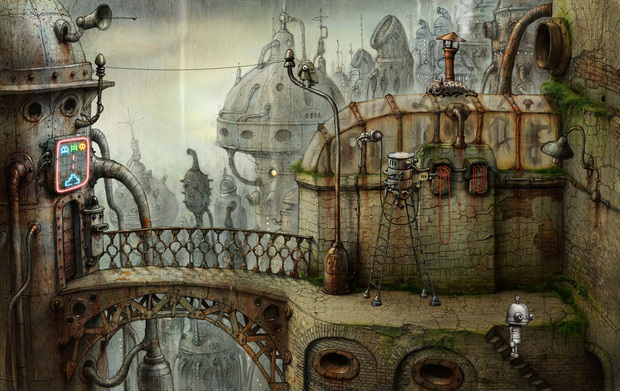 Point and click adventures -- one of classic gaming's most revered and, until recently, most forgotten genres -- have seen a renaissance of late. That's something I'll be exploring more fully in a future column, but, for now, it's a point best proven by what will surely be one of the highest profile indie games released this month: Amanita Design's adventure Machinarium, due for release this Friday for PC and Mac. Best known for their early web adventure Samorost -- a game that swapped out pixel crafting for a photo-surreal landscape built on rusted cans and gnarled, mossy roots ('samorost', not coincidentally, being the word for 'gnarled' or 'twisted' in Amanita head Jakub Dvorský's native Czech) -- the studio quickly established themselves as the indie forerunners of the then-niche form with Samorost 2, and promotional games for Dallas-area glee-rockers Polyphonic Spree, Nike, and the BBC. Machinarium looks to be the studio's most ambitious work, here fully hand-drawn as opposed to their former photo-shoppery, and digging deeper into the genre's past with inventory-based puzzling and exploration rather than rote hot-spot-hunting points and clicks. Presented here, then, ahead of its imminent release, a rare hi-res look into the sketchbooks of Dvorský and fellow artist Adolf Lachman showing the conceptual origins and creation of its rusted iron steamworks world, alongside a selection of images of the completed product. Machinarium can be pre-ordered directly from Amanita (which comes with a downloadable bonus soundtrack thank-you gift), or for via Direct2Drive (for PCs) and GamersGate (for the Mac), where you'll also find a demo version for each platform. Point and click adventures -- one of classic gaming's most revered and, until recently, most forgotten genres -- have seen a renaissance of late. That's something I'll be exploring more fully in a future column, but, for now, it's a point best proven by what will surely be one of the highest profile indie games released this month: Amanita Design's adventure Machinarium, due for release this Friday for PC and Mac. Best known for their early web adventure Samorost -- a game that swapped out pixel crafting for a photo-surreal landscape built on rusted cans and gnarled, mossy roots ('samorost', not coincidentally, being the word for 'gnarled' or 'twisted' in Amanita head Jakub Dvorský's native Czech) -- the studio quickly established themselves as the indie forerunners of the then-niche form with Samorost 2, and promotional games for Dallas-area glee-rockers Polyphonic Spree, Nike, and the BBC. Machinarium looks to be the studio's most ambitious work, here fully hand-drawn as opposed to their former photo-shoppery, and digging deeper into the genre's past with inventory-based puzzling and exploration rather than rote hot-spot-hunting points and clicks. Presented here, then, ahead of its imminent release, a rare hi-res look into the sketchbooks of Dvorský and fellow artist Adolf Lachman showing the conceptual origins and creation of its rusted iron steamworks world, alongside a selection of images of the completed product. Machinarium can be pre-ordered directly from Amanita (which comes with a downloadable bonus soundtrack thank-you gift), or for via Direct2Drive (for PCs) and GamersGate (for the Mac), where you'll also find a demo version for each platform.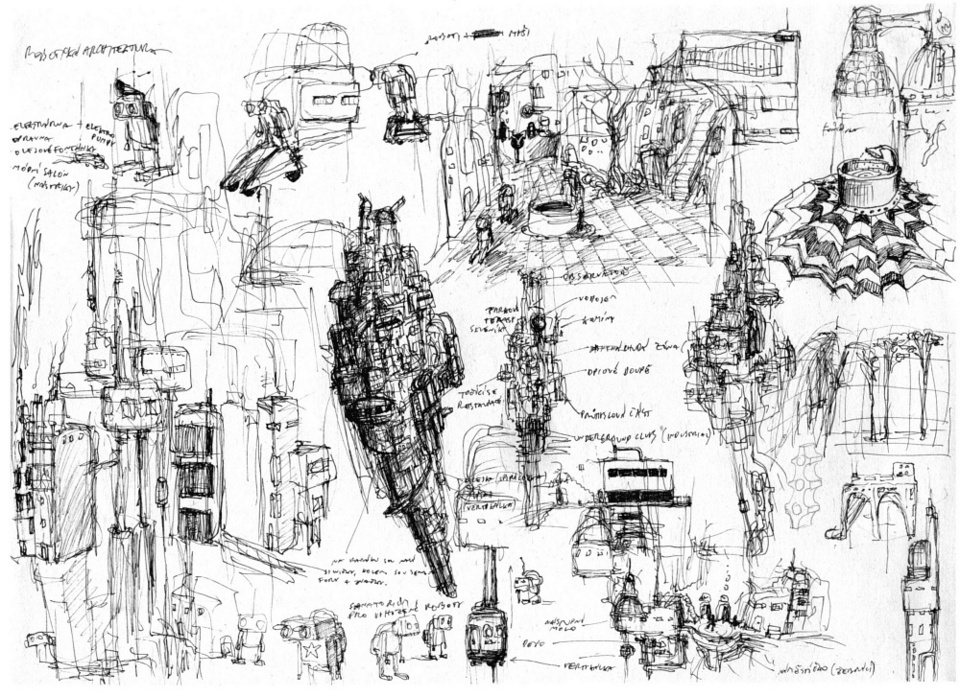 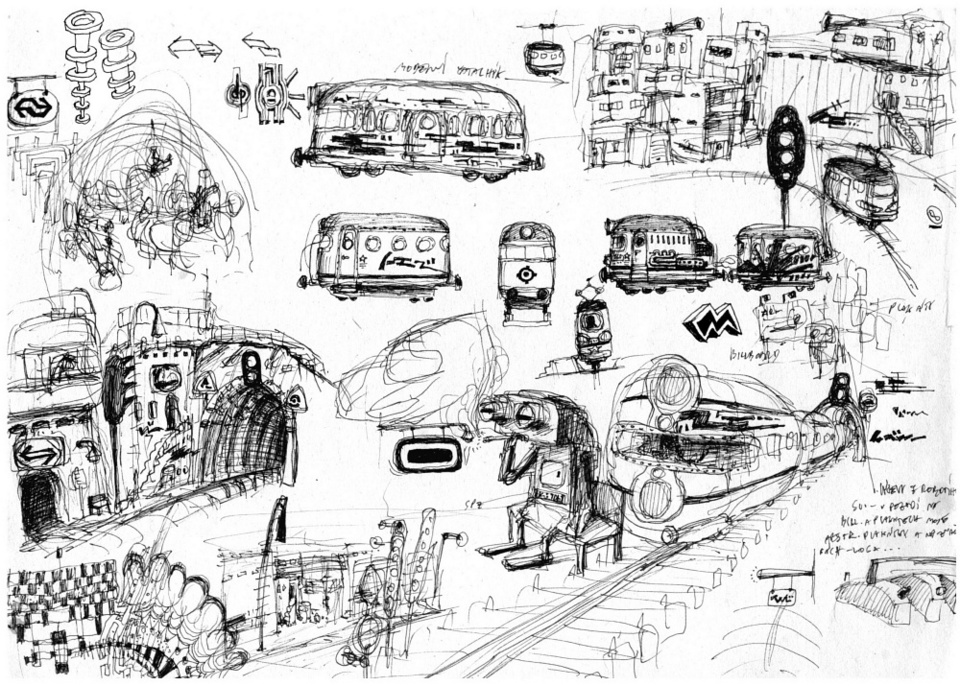 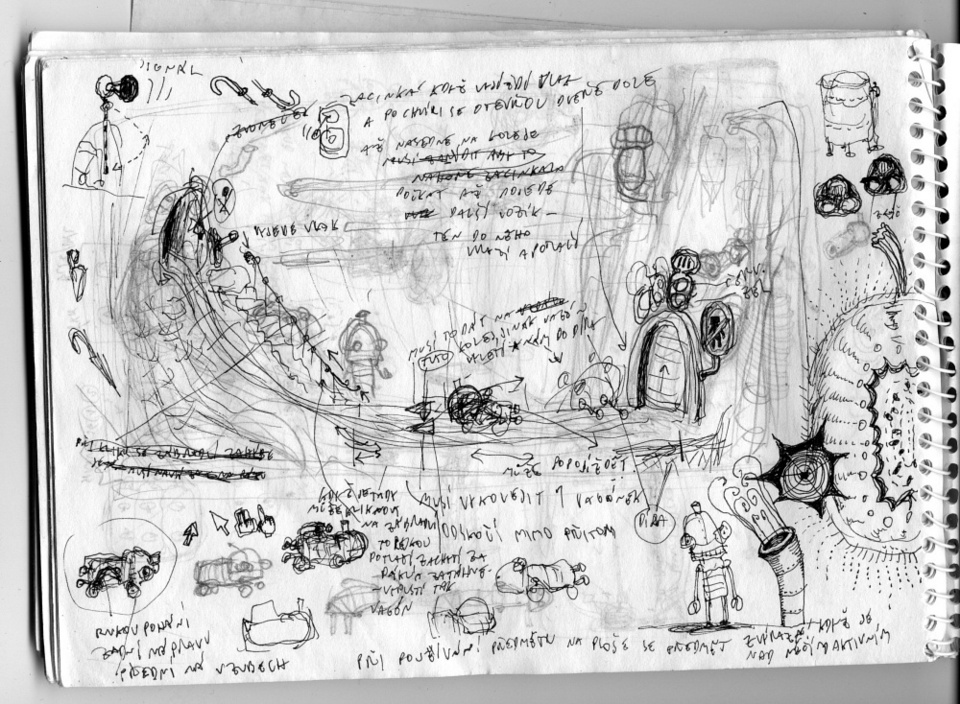 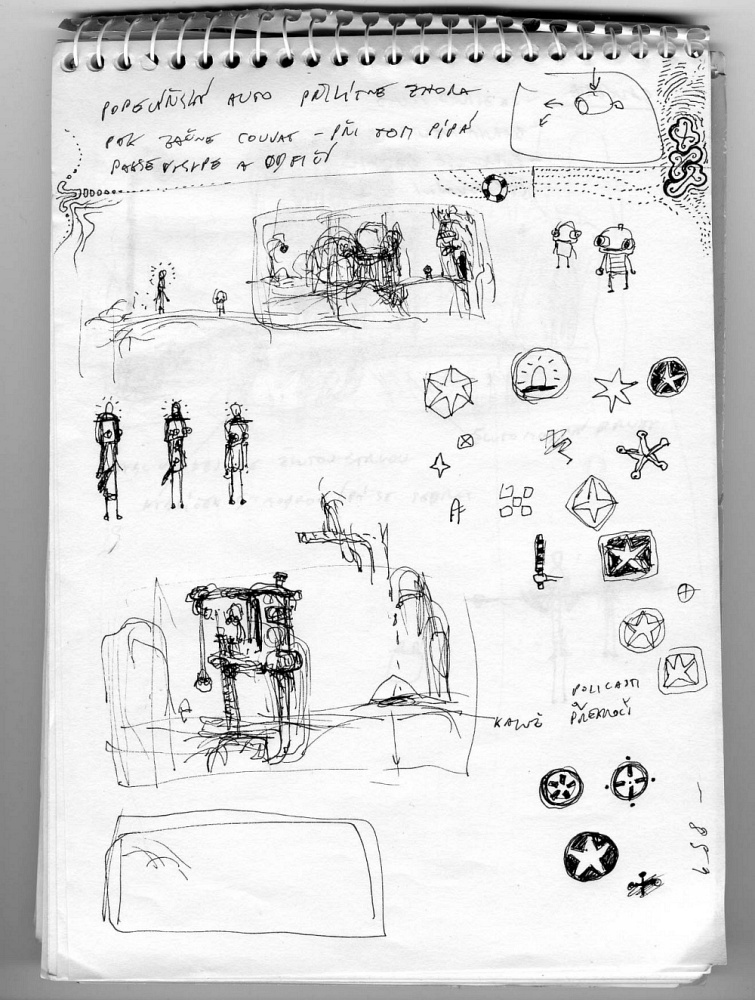 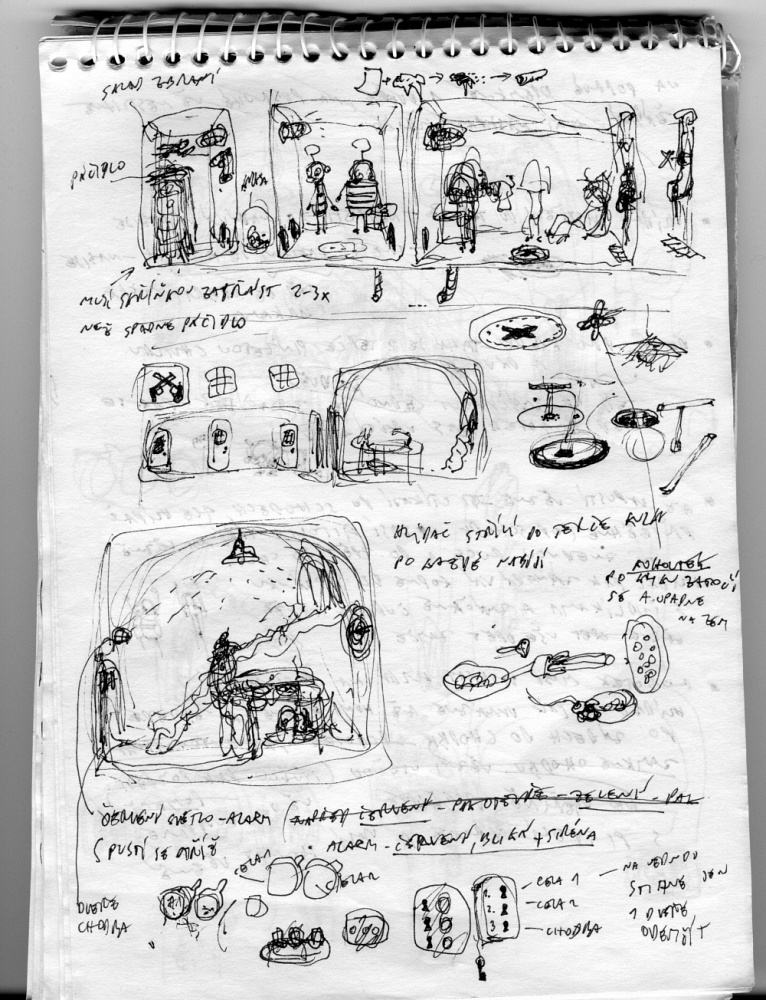 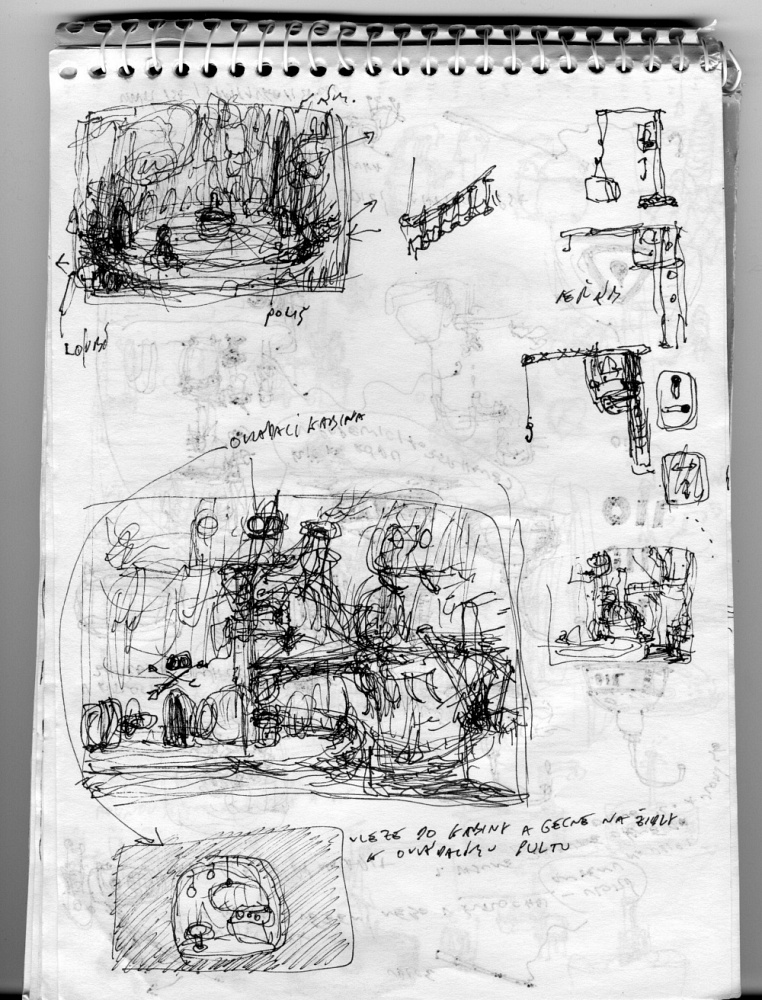  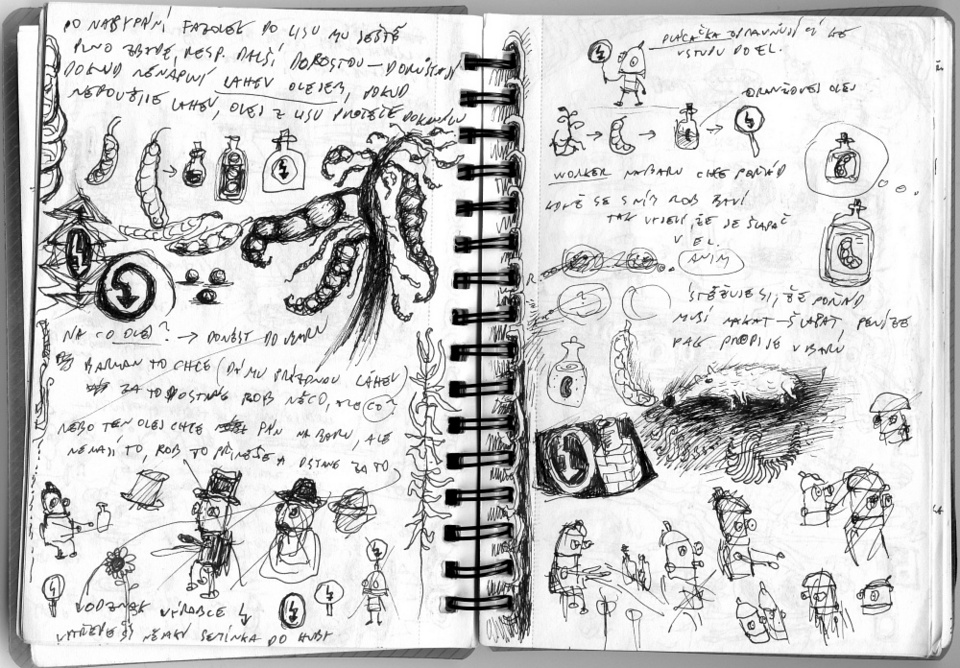 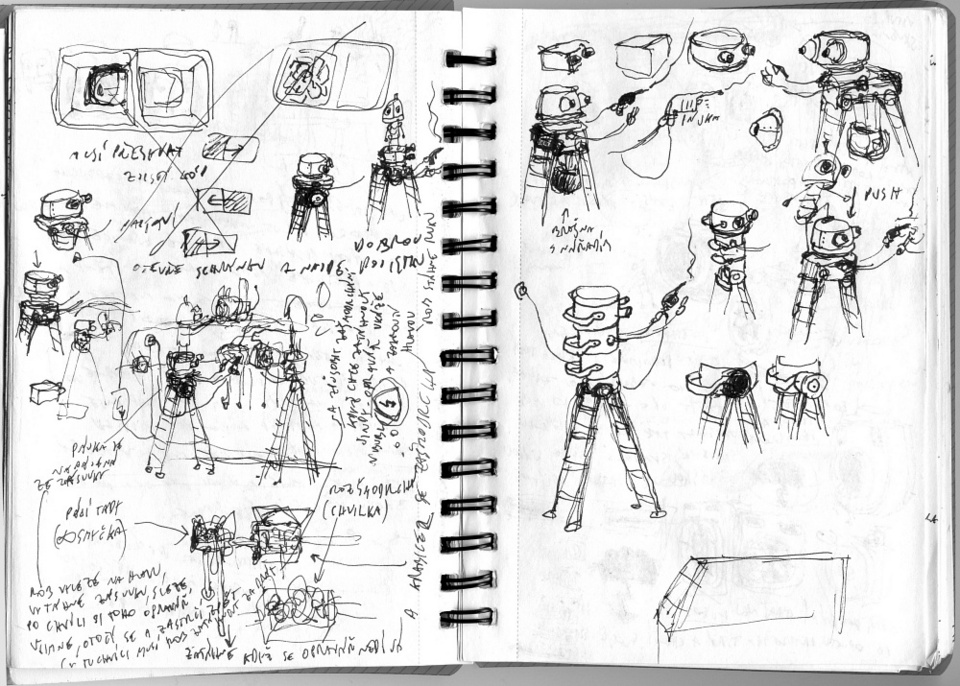 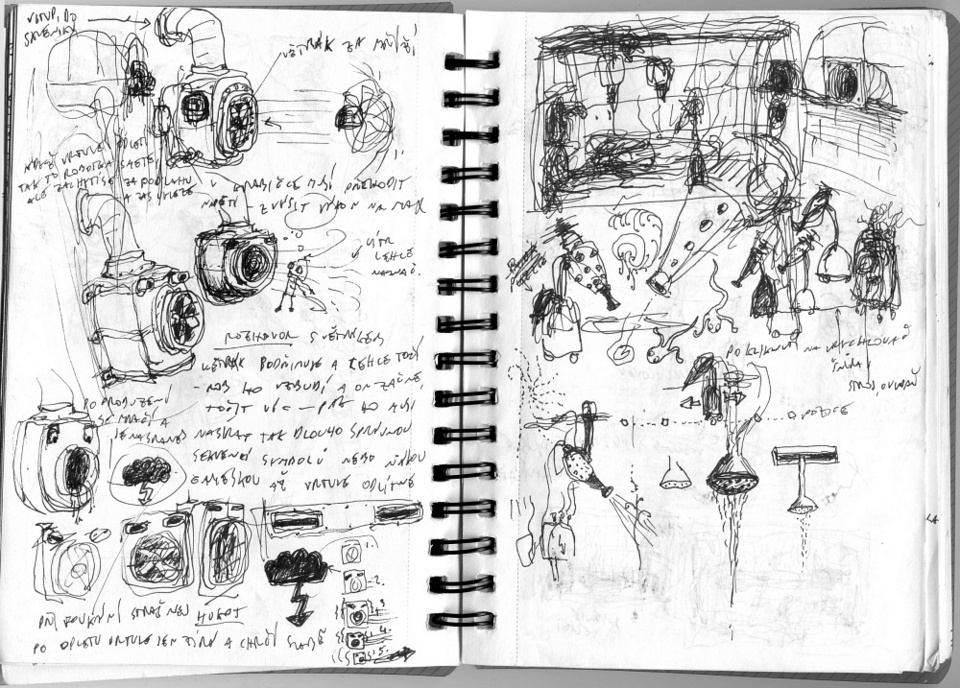  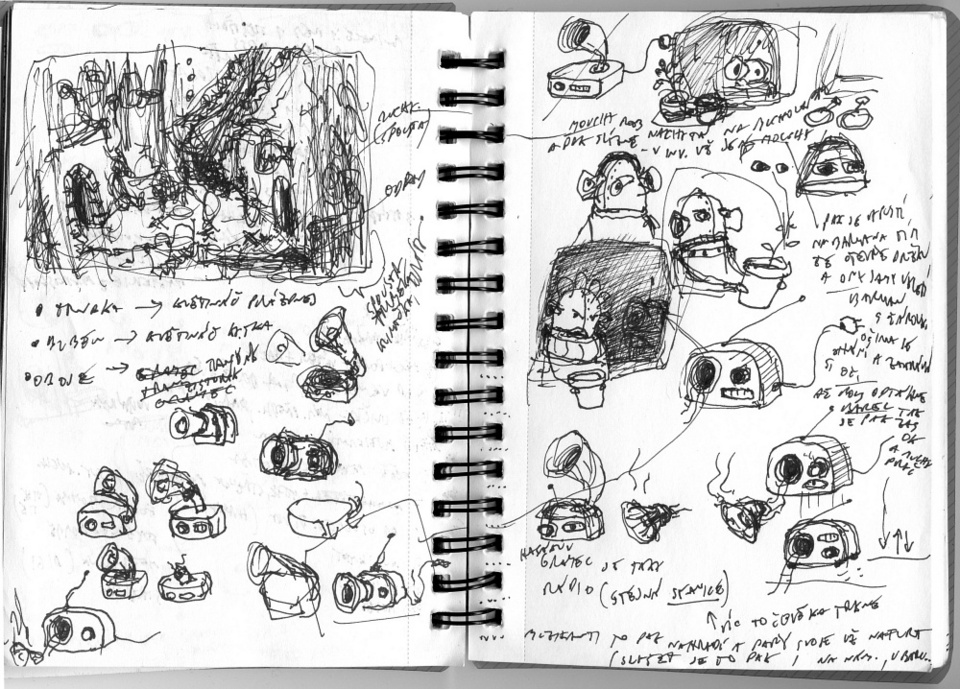 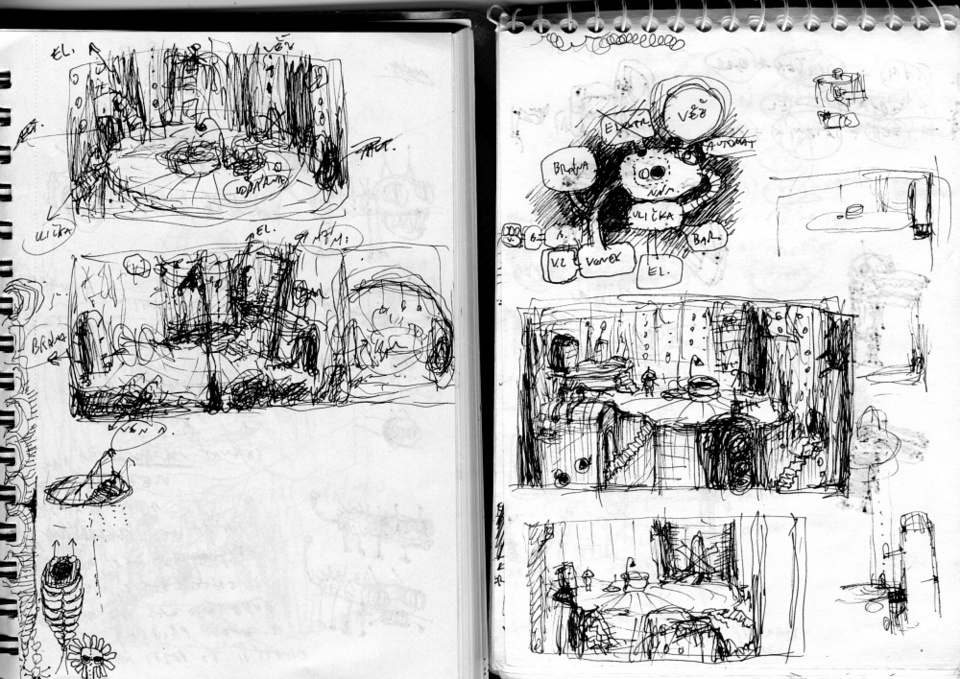 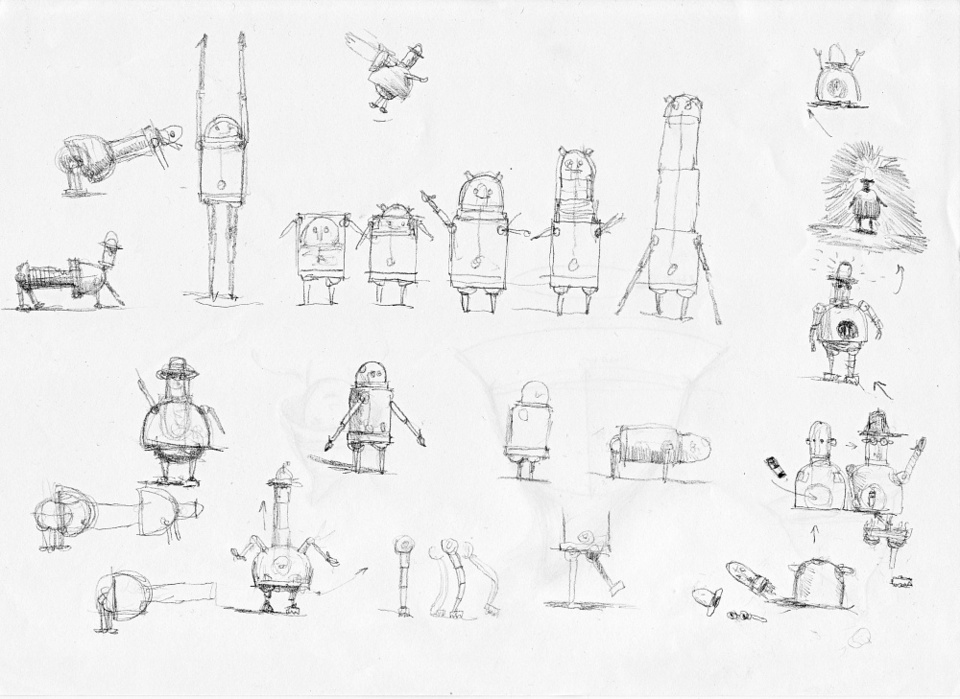 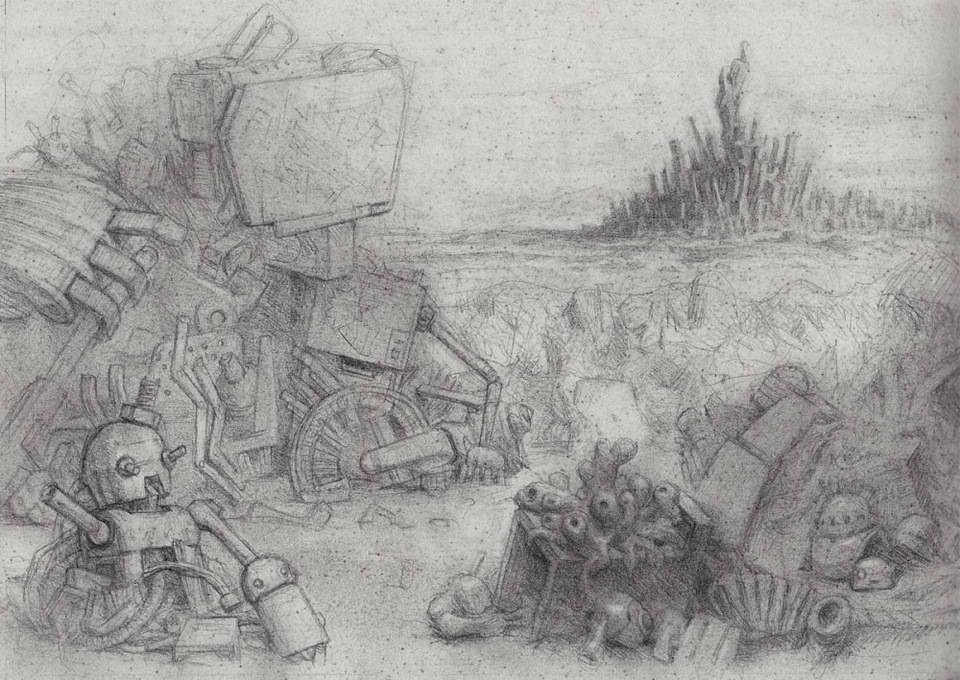 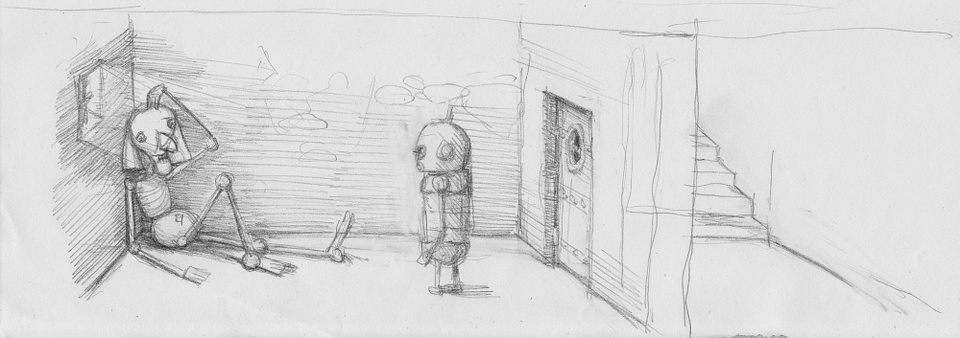  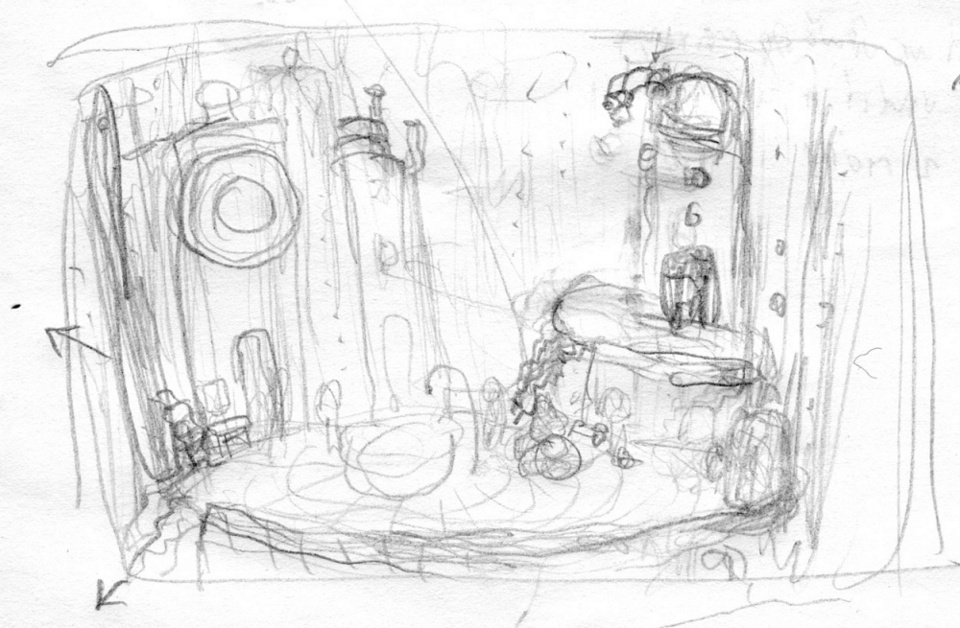 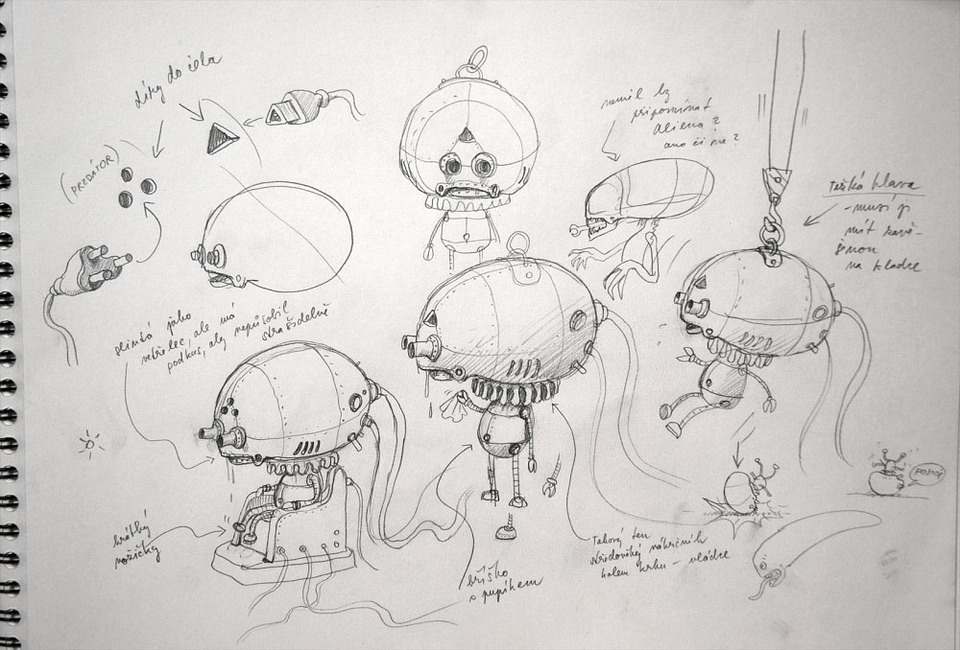 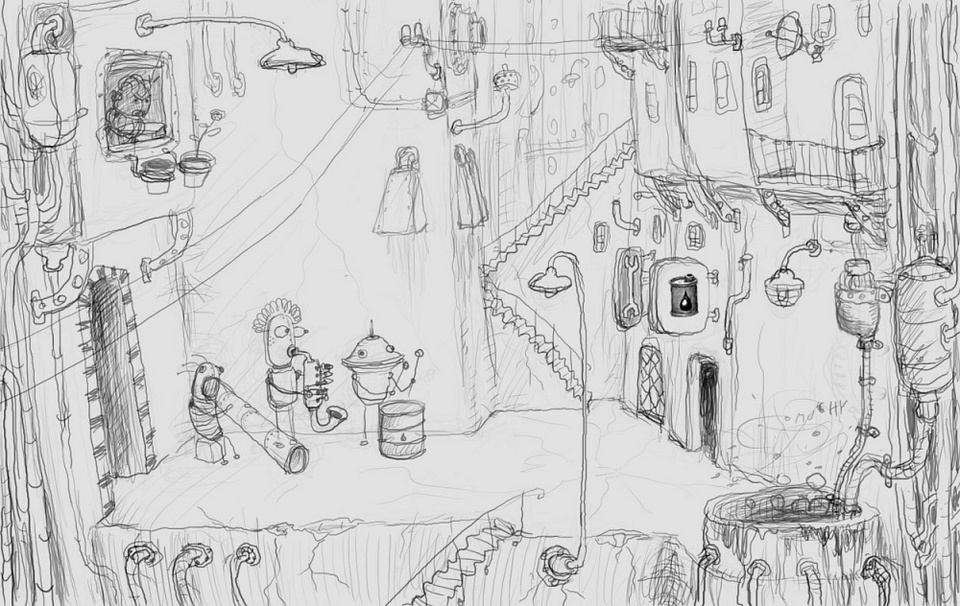 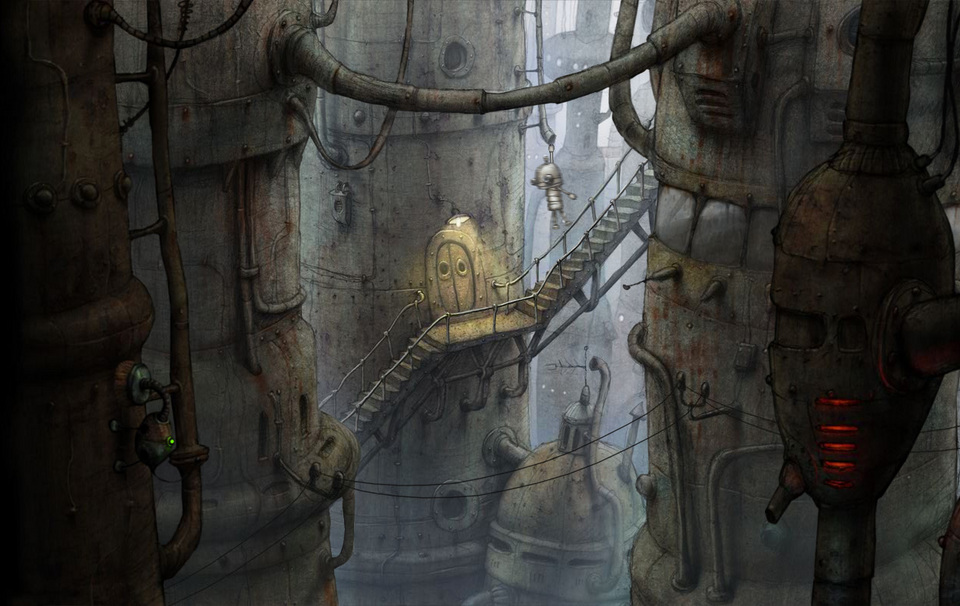 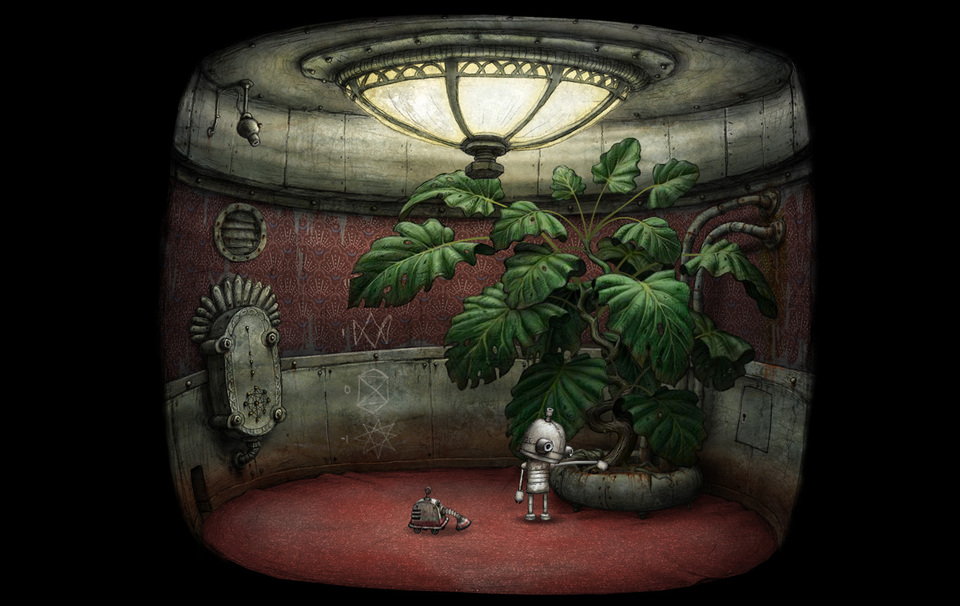 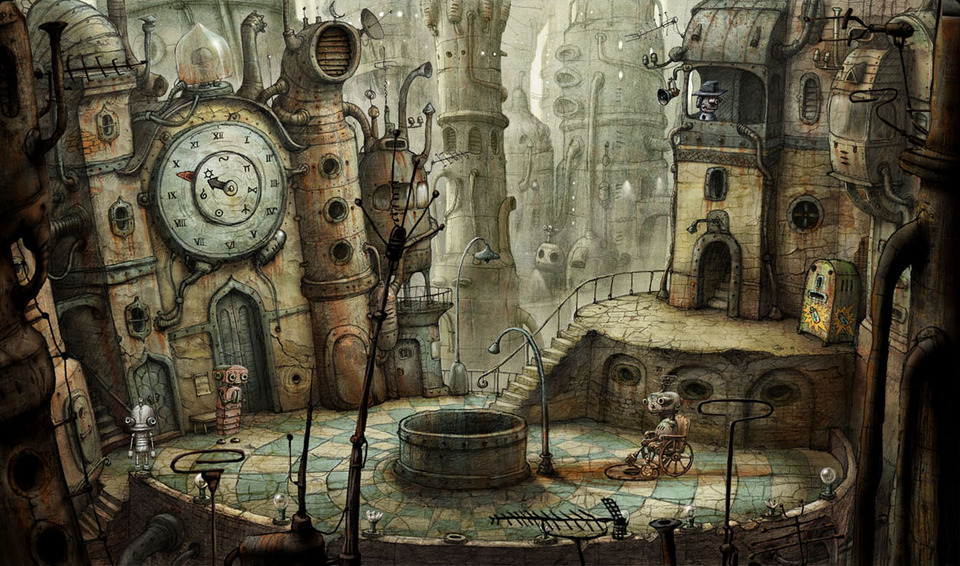 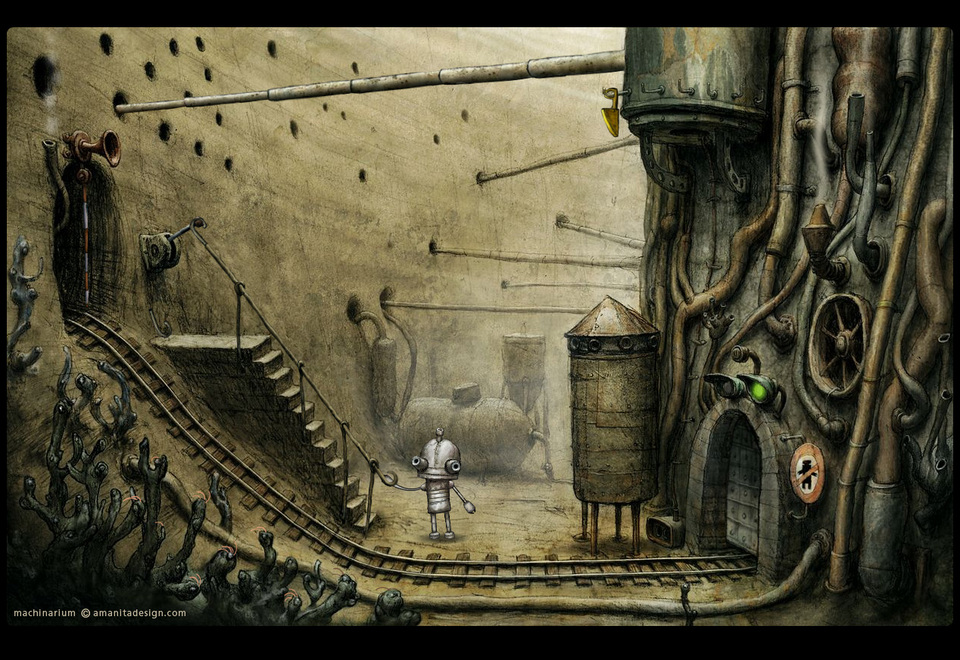 |
| Letter to rocket scientists from kid, 1957: "You put in other details" Posted: 14 Oct 2009 02:16 AM PDT  Jason sez, "A beautiful entry at the Letters Of Note website detailing a card sent to the Woomera Rocket Range in Australia, 1957, by a little boy named Dean Cox. Dean provided the rocket scientists a helping hand with future space craft design offering his concept of a Rolls Royce Jet Engined-powered two man vehicle- but beyond that, the scientists would have to "put in other details". Turns out 52 years later he's been tracked down (see article comments) and he's still waiting for a reply." TO A TOP SCIENTIST (Thanks, Jason!) |
| Repository of Freedom of Information Act docs Posted: 13 Oct 2009 11:45 PM PDT Hugh from the EFF sez, "Government Attic is a searchable repository of govenment docs released through Freedom of Information Act requests. Neat!" Rummaging in the Government's attic (Thanks, Hugh!) |
| Meet the 42 lucky people who got tosee the secret copyright treaty Posted: 13 Oct 2009 11:43 PM PDT The Anti-Counterfeiting Trade Agreement is a proposed copyright treaty that contains provisions that criminalize non-commercial file-sharing; require net-wide wiretapping for copyright infringement and border-searches of hard-drives and other devices; and disconnection from the Internet for people accused of violating copyright. The actual text of these provisions is a secret, though, as the treaty is being negotiated away from the UN, behind closed doors; the Obama administration denied a Freedom of Information Act request for it on the grounds that it is a matter of "national security." The NGO Knowledge Ecology International pressed the US Trade Rep on this, and received a reply stating that 42 DC insiders -- including some reps from activist groups -- have been shown the treaty, after signing a vow promising to treat it as classified. KEI has researched the 42 people and their bios and corporate affiliations. Sherwin Siy of Public Knowledge describes his experiences with the secret treaty: White House shares the ACTA Internet text with 42 Washington insiders, under non disclosure agreements Previously:
|
| What's right with Search Engine Optimization Posted: 14 Oct 2009 12:39 AM PDT Search Engine Land's Danny Sullivan has published an open response to Derek Powazek's Spammers, Evildoers, and Opportunists defending the practice of search engine optimization, arguing that there's plenty of esoteric, useful, non-sleazy information that web-site-owners need to know to get their stuff recognized correctly by Google. I think there's something to this, but I don't find most of Danny's examples very compelling. In Derek's original article, he mentions most of the sort of thing Danny cites here (distinctive page titles, for example). The Google Base bit is indeed esoteric and the kind of thing a pro can help you with, but I'd be more convinced if his article had more of this sort of thing and fewer straw-men. But to really be real, let's remember that she's selling real estate in one of the most competitive areas of the country, Newport Beach, California. Her friends aren't all going to buy homes she's listing. Her "community" congregates on Google and does things like type in "newport beach homes for sale."An Open Letter To Derek Powazek On The Value Of SEO (Thanks, Danny!) |
| XKCD: the limits of anti-static wrist-strap protection Posted: 13 Oct 2009 11:24 PM PDT 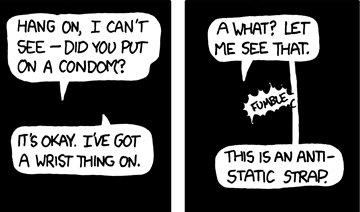 Today's XKCD webcomic examines the limits of protection offered by the talismanic anti-static wrist strap that RAM companies send you with your purchase. Previously:
|
| Airlines that charge fees lost more money than airlines that didn't Posted: 13 Oct 2009 11:20 PM PDT The US airlines that created the largest, most redonkulous and abusive fees this year lost the most money last quarter. Airlines with low or no fees lost the least. THE FOREST, THE TREES AND THE BAG FEES (via Kottke) |
| Handmade old-school leather luggage Posted: 13 Oct 2009 10:44 PM PDT  Nik Palmer sez, "Me and my son hand make these beautiful old-school suitcases; we work out of Vancouver, BC." As you might expect, these aren't cheap -- the Gladstone shown here goes for CAD550. But it's handmade to order, it's beautiful, and it looks like it'd last for a century. Palmer and Sons (Thanks, Nik!) |
| Posted: 13 Oct 2009 05:02 PM PDT  Every year, a million people die of malaria. Up to twenty percent of those deaths may be the result of sick individuals taking counterfeit drugs. The new issue of Smithsonian features an engaging story about the trade in fake anti-malaria drugs and efforts to squash it. Sometimes, spotting bogus pills, often sold in small village pharmacies, is easy due to mistakes on the packaging: blister packs reading "tabtle" instead of "tablet." However, the best counterfeits require high-tech forensic tests to identify. Public health officials teamed up with the World Health Organization for Project Jupiter, an effort to throw a wrench in the trade. First they have to identify the source though. From Smithsonian (click image for full photo by Jack Picone): Bogus medicines are by no means limited to malaria or Southeast Asia; business is booming in India, Africa and Latin America. The New York City-based Center for Medicine in the Public Interest estimates that the global trade in fake pharmaceuticals--including treatments for malaria, tuberculosis and AIDS--will reach $75 billion a year in 2010. In developing countries, corruption among government officials and police officers, along with weak border controls, allow counterfeiters to ply their trade with relative impunity. Counterfeiting is "a relatively high-profit and risk-free venture," says Paul Newton, a British physician at Mahosot Hospital in Vientiane, Laos. "Very few people are sent to jail for dealing in fake anti-infectives.""The Fatal Consequences of Counterfeit Drugs" |
| Posted: 13 Oct 2009 05:12 PM PDT  Boing Boing guestblogger Connie Choe is a health and culture writer by day and a professional kimchimonger by night. "Mashup posterboy" John Herren has created a site called Reading Radar that splices The New York Times bestseller list with selected, up-to-date information from Amazon.com in one clean, clutter-free place. This is stupendous because the NYT bestseller list basically just tells you that a lot of people are buying a particular book, but it never tells you how many of those people sincerely regretted purchasing the aforementioned book. For example, the current #1 bestseller on the hardcover fiction list is Dan Brown's The Lost Symbol, which famously sold 1 million copies in its first day of release. High sales volume doesn't automatically mean it's worth reading though. Especially when Reading Radar juxtaposes its NYT bestseller status with its Amazon customer review status (a measly 2.5 out of 5 stars). Herren -- who created TagCloud as a weekend project a few years ago -- says that Reading Radar took just "a few nights of hacking" and describes the process in detail on his blog. "It was trivial to slap together," he comments, "To the point where I'd hardly consider it programming. But hey, at least I deployed something." |
| Posted: 13 Oct 2009 02:49 PM PDT |
| Posted: 12 Oct 2009 07:25 PM PDT  Ransom Riggs, over at the mental_floss blog, has a great pictorial tour of Bodie, California--America's quintessential ghost town. I remember reading about Bodie in my Childcraft Encyclopedias back in the day, and I'm excited to finally see the whole thing up close...
Gloriously haunting photos (pardon the pun) and some nifty history await. Check it out. Image courtesy Flickr user mulmatsherm, via CC |
| EFF comes to the rescue of Texas Instruments calculator hackers Posted: 13 Oct 2009 05:15 PM PDT EFF has come to the rescue of three Texas Instruments graphing calculator hackers who had written their own software for their devices and received a threat of a copyright lawsuit from TI for their trouble. Heck of a job, TI.
EFF Warns Texas Instruments to Stop Harassing Calculator Hobbyists (Image: Savingsand.co.uk) |
| 2010 Moleskine desk calendar for $3.74 Posted: 13 Oct 2009 12:22 PM PDT  This Moleskine book opens up into a desktop calendar. The list price is $19.95 but Amazon is selling it for $3.74. As Michael Leddy noted, they should have marked it down to $3.65. The Days That Count Desk Top Calendar (Via Orange Crate Art) |
| Digital Open Winners: Raymond Zhong and Aatash Parikh, "Centralized Student Website" Posted: 13 Oct 2009 12:45 PM PDT (Download MP4 video or Watch on YouTube). Institute for the Future teamed up with Sun Microsystems and Boing Boing Video to co-host the Digital Open, an online tech expo for teens 17 and under around the world. Today, we're publishing the first of 8 videos profiling each of the winning teen teams -- and we begin with "Centralized Student Website," by Raymond Zhong and Aatash Parikh, two cool kids from Fremont who dig Drupal. More from today's press release announcing the Digital Open winners: The Digital Open (DigitalOpen.org) ran from April 15 until August 15, 2009. Youth from around the world submitted text, photos, and videos documenting projects all created from a list of free and open software licenses. The projects focused on the transformative power of open technology. Resources from figures like respected open source advocate Richard Stallman to organizations like Creative Commons were made available to contestants to help them learn more about free and open technology movements. Previously: |
| Mexican Day of the Dead antique prints Posted: 13 Oct 2009 12:38 PM PDT  The British Museum is hosting two exhibitions of Mexican artwork and culture - "Moctezuma: Aztec Ruler" and "Revolution on paper: Mexican prints 1910-1960" - and displaying Day of the Dead papier mâché figures and an altar, created by Mexican artist Adriana Amaya and children. Tied to these major exhibits and Dia de los Muertos, Redstone Press has issued a neat box set of oversized postcards, titled Calaveras: Mexican Prints for the Day of the Dead. 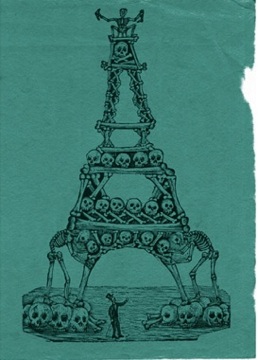  The set contains 22 postcards by Mexican printmakers Manuel Manilla (1830-1895) and J. G. Posada (1852-1913). The Redstone Press site posted a sample of these great prints, as did the Daily Telegraph. (Thanks, Mike Love!) |
| Snow kite boarder gets carried away by kite Posted: 13 Oct 2009 12:52 PM PDT |
| Letters of Note -- blog of written correspondence from well-known people Posted: 13 Oct 2009 11:16 AM PDT  Letters of Note is a fantastic blog: "Letters of Note is an attempt to gather and sort fascinating letters, postcards, telegrams, faxes, and memos. Scans/photos where possible. Fakes will be sneered at. Updated 2-3 times every weekday." |
| What actual Mayans are saying about 2012 Posted: 13 Oct 2009 11:11 AM PDT When your three-year checkbook calendar runs out, does that signal the end of the world? No? It's pretty much the same for the Mayan calendar and 2012. In fact, the idea of a countdown to cataclysmic apocalypse is a Western, not Mayan idea, say some Mayans who are getting fed up with the hype. You can read more about their perspective in this AP article: "2012 Isn't the End of the World, Mayans Insist." Another important thing to think about: The amount of money being raked in by woo-woo charlatans (and, now, big entertainment companies) who are all capitalizing off what amounts to willful misinterpretations of Mayan legends, traditions and science. My college anthropology professor (and expert in Central and South American archaeology) John Hoopes had some interesting thoughts on this... I'd like to see more of the revenue from the hyping of 2012 mythology through books, movies, conferences, and websites go directly to the living descendants of the ancient Maya whose cultural heritage and intellectual property is being appropriated without their knowledge or consent for the financial benefit of non-Maya hucksters. This raises a lot of questions about who owns traditional knowledge. I don't claim to have the answer, though. There are a lot of wrinkles and complications, including the good possibility that the living Maya probably have no legal standing when it comes to these issues. But I suspect it has much more to do with what's ethically responsible than with legal obligations. I don't know that I know the best way to handle this, either. But, whether or not the living Maya should be paid for the use (or misuse) of their ancestors' ideas, I personally see a lot of racism at play in this story. Not the white hood sort of racism, sure. But I'm don't think I have a better word for what happens when the largely white and wealthy American New Age community co-opts and exoticises the traditions of a marginalized native people and then ignores those people when they say, "That's not what our traditions mean. Please stop misrepresenting us." Thumbnail image courtesy Flickr user theilr, via CC |
| Evolution of the International Space Station Posted: 13 Oct 2009 10:58 AM PDT  USA Today produced this video showing ten years of changes to the International Space Station. As Kevin Kelly says: "I realized from watching this wonderful summary that space stations will be like cities: ever changing, ever accumulating, ever growing. Some may grow to be a century old, full of new layers but and contain ancient parts they cannot shed." |
| Grown-Ups are Dumb! (No Offense) -- fun book by a 12-year-old cartoonist Posted: 13 Oct 2009 11:42 AM PDT How cool is it that a 12-year-old cartoonist would dedicate her fun new book of cartoons to old-school masters like Sergio Aragones and John Stanley? (I imagine her father, underground cartoonist and publisher Denis Kitchen, gave her access to tons of excellent comics, which inspired her to become a cartoonist herself.) Alexa Kitchen's good taste in cartoonists shines in Grown-Ups are Dumb! (No Offense), an anthology of light-hearted comic strips that will appeal to kids in elementary and junior high school. The great thing about her work is that it really is the product of a kid. Her sense of humor and perspective on school, friends, siblings, and families is very much like my own two daughters'. I know they'll enjoy her book (she has one previous book: Drawing Comics is Easy! (Except When It's Hard)) |
| NYC's Data Mine: More like a data dump? Posted: 13 Oct 2009 10:47 AM PDT  Last week, New York City, like Vancouver and San Francisco earlier this year, unveiled its plan to use open data to make the city government more transparent and spur civic involvement. They used the classic (now cliche?) Web 2.0 tactic to encourage engagement: a contest. The curely named NYC BigApps Contest is intended to "stimulate innovation in the information technology and media industries, and attract and support developer talent to develop web and mobile applications (apps) by using City data. These apps will benefit the City and its citizens and demonstrate the increasing accessibility and transparency of City government." The public data is available for mashing and munging in the NYC Data Mine.  Amidst the big launch though, there was a wee problem that arose when some curious citizens discovered that a report on women's social services organization found in the Data Mine accidentally still contained secret question/answer fields for the groups. Ooops! Here's the Google Group where the security breach was first reported. While I'm sure the project managers will be paying closer attention to data security from here on out, the NYC Data Mine may not be all it's cracked up to be anyway. My Institute for the Future colleague Anthony Townsend, a co-founder of free WiFi activists NYC Wireless, has been researching Gov 2.0 for quite some time and posted a short bubble-bursting post about why the the NYC Data Mine is more like municipal vaporware. From IFTF's Future Now blog: Amidst the big launch though, there was a wee problem that arose when some curious citizens discovered that a report on women's social services organization found in the Data Mine accidentally still contained secret question/answer fields for the groups. Ooops! Here's the Google Group where the security breach was first reported. While I'm sure the project managers will be paying closer attention to data security from here on out, the NYC Data Mine may not be all it's cracked up to be anyway. My Institute for the Future colleague Anthony Townsend, a co-founder of free WiFi activists NYC Wireless, has been researching Gov 2.0 for quite some time and posted a short bubble-bursting post about why the the NYC Data Mine is more like municipal vaporware. From IFTF's Future Now blog: ...The NYC Data Mine that is supposed to be the raw materials for these apps, is more of an NYC Data Dump than anything else. Browsing through the 100+ datasets posted this afternoon to the city's site, you see that about half are just boundary shapefiles easily downloaded or licensed through existing channels. The other half are a dog's breakfast of static datasets (New! Updated monthly!) in every format from Excel to Access to (gag!) SAS. Hello, people, its 2009. API+XML FTW! Just to take one example, I can't wait to see what fascinating mashups stem from the historic release of the Department of Consumer Affairs' list of licensed electronic shops. Because what the world is really lacking is more information about the location of electronics retailers. What this Data Dump looks like is the collected attachments received in reponse to the poor bureaucrat who had to twist every department's arms for one dataset, so the city could say every department contributed."Municipal Vaporware: Why NYC's Data Mine is A Data Dump" |
| When Country Bear Jamboree was serious business Posted: 12 Oct 2009 06:33 PM PDT |
| Speaking at Waterloo's Quantum to Cosmos, Oct 22 Posted: 10 Oct 2009 10:16 PM PDT |
| Creepy horror comic rises from the grave and is terrifyingly good Posted: 13 Oct 2009 07:11 AM PDT  Back in July, Dark Horse Comics relaunched the classic horror title Creepy, one of those titles that caused straight America to recoil in terror. Creepy's short stories veered between morality plays in which some awful person did some terrible deed and received his comeuppance to unabashed, straight-ahead horror in which terrible people did terrible things -- often to other terrible people -- and got away with it. I rather think it was this latter that got the censors' bowels in an uproar. The relaunched Creepy, a 48-page black and white monthly, is true to the original spirit, and each story is introduced by Uncle Creepy, a Crypt-Keeper-like ghoul with a penchant for grisly puns. I love the art in this book -- each story is done by a different artist, but all hanker back to the golden age of horror comics, funny and ghastly lines that can be straight-ahead cartoons or stippled impressionism as the story dictates. And in case your tastes run to the original Creepy: Dark Horse's handsome archival collections of classic Creepy |
| You are subscribed to email updates from Boing Boing To stop receiving these emails, you may unsubscribe now. | Email delivery powered by Google |
| Google Inc., 20 West Kinzie, Chicago IL USA 60610 | |






 I'll be in Waterloo, Ontario on 22 Oct 2009 for the Perimeter Institute's Quantum to Cosmos event, which will also feature Neal Stephenson, Stewart Brand, Neil Gershenfeld, Stephen Hawking, Tara Hunt, Jaron Lanier, and
I'll be in Waterloo, Ontario on 22 Oct 2009 for the Perimeter Institute's Quantum to Cosmos event, which will also feature Neal Stephenson, Stewart Brand, Neil Gershenfeld, Stephen Hawking, Tara Hunt, Jaron Lanier, and
No comments:
Post a Comment